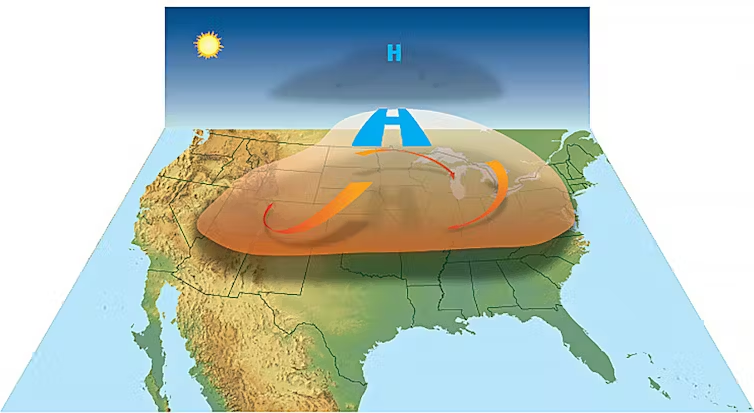We have commented a number of times in the past few years about the areal extent of the hemispheric cold pool of air at 850 millibars (about a mile above the surface) during the winter. As one might expect, that pool expands dramatically from October through February and then begins to contract as we move toward spring and summer.

Our analysis uses the minus 5 Celsius isotherm (line of constant temperature) and has shown that the average winter cold pool area has systematically shrunk for at least the past 76 years. One might reasonably wonder if this cold pool survives at all during the height of Northern Hemisphere summer. As it turns out, some summers have a number of days in mid-July on which there is absolutely no air at 850 mb that is as cold as minus 5 Celsius. Roughly half of the last 76 years have had such a “vanishing” cold pool, with the pool getting very close to vanishing many of the other years.
The calendar date on which the smallest areal extent is observed in a given summer varies from around July 4 to as late as July 23. Thus, later this week we will likely be close to the day of the minimum area for the year.
With no intention to distract from the pleasant summer we are all currently enjoying, reaching the annual minimum this week means that by the beginning of next week the cold pool will begin its slow, inevitable expansion again — culminating in the coldest week of the year in late January when the cold pool will cover nearly 27 million square miles.
Enjoy the summer — it can’t last!
Steve Ackerman and Jonathan Martin, professors in the UW-Madison department of atmospheric and oceanic sciences, are guests on WHA radio (970 AM) at noon the last Monday of each month. send them your questions at stevea@ssec.wisc.edu or jemarti1@wisc.edu.





